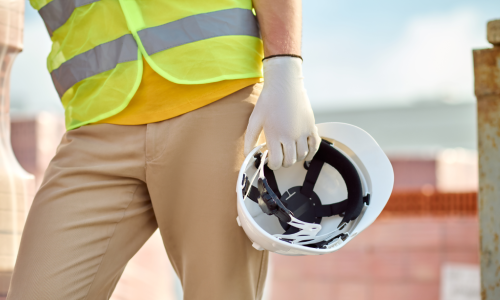
For injured workers, navigating the aftermath of a worksite injury claim requires a deep understanding of legal rights and responsibilities. A construction accident lawyer plays a critical role in untangling these complexities, ensuring that injured workers receive the compensation they deserve.
The Living Organism of a Construction Site
To truly grasp the complexity of construction workers’ legal rights and accident claims, we must first understand that a construction site is less like a fixed workplace and more like a living organism that evolves constantly. Every hour brings new challenges, configurations, and potential hazards.
The site that workers left at sunset may be dramatically different when they return at sunrise, with new excavations, erected structures, or delivered materials creating an entirely new landscape of risk.
The Human Web: Understanding Site Hierarchy
Picture a modern high-rise construction project in downtown Atlanta. At any given moment, dozens of different trades might be working simultaneously across multiple levels.
Electricians thread conduit through newly framed walls while plumbers install risers two floors below. Above them, ironworkers bolt together the building’s skeleton, while concrete finishers work on freshly poured decks below.
Each of these trades operates under its own supervisor, who reports to a subcontractor, who in turn answers to the general contractor’s site superintendent.
This human web creates multiple layers of oversight and responsibility:
- The Project Owner’s Representative monitors overall progress and compliance with project specifications, making decisions that can affect site safety conditions.
- The General Contractor’s Superintendent coordinates all site activities, balancing the competing needs of different trades while maintaining safety protocols.
- Multiple Subcontractor Foremen direct their specific trades, each responsible for their workers’ safety while coordinating with other trades in shared spaces.
- Safety Officers from various companies may be present, each with the authority to stop work if they observe dangerous conditions.
When an accident occurs, determining liability means examining how each level of this hierarchy contributed to—or could have prevented—the incident.
Did the owner’s representative push for a schedule that compromised safety? Did the general contractor’s superintendent properly coordinate overlapping trade work? Did subcontractor foremen adequately train and supervise their workers?
In many cases, a construction accident lawyer must assess these factors to build a strong claim on behalf of the injured worker.
The Temporal Challenge: Evidence in Motion
Unlike a car accident, where investigators can photograph skid marks and measure impact points, worksite injury claims often rely on evidence that disappears within hours or even minutes of an incident.
Consider a scaffold collapse: By the time investigators arrive, the immediate need to rescue injured workers and prevent further accidents may have already altered the scene significantly. Critical evidence about how the scaffold was assembled, what loads it carried, and what triggered the collapse may be lost in the rescue effort.
This time-sensitive nature of evidence presents distinct challenges:
- Physical Evidence Transformation: The very act of rescuing injured workers often requires dismantling or altering key evidence. Emergency responders rightfully prioritize life safety over evidence preservation.
- Weather Effects: External conditions that contributed to an accident, such as ice on walking surfaces or wind loads on temporary structures, may change or disappear entirely before documentation occurs.
- Continuing Operations: The economic pressure to maintain construction schedules often means work must resume quickly, further altering the accident scene.
A construction accident lawyer must act swiftly to secure witness statements, obtain site records, and preserve any remaining evidence to support a worksite injury claim.
Real-Time Decision-Making and Emergency Response
Construction accidents often require immediate decisions that can significantly impact both human safety and subsequent legal claims. When an incident occurs, site supervisors must instantly balance multiple competing priorities, each with its own legal implications.
Immediate emergency response involves a cascade of critical decisions:
Medical Response
The decision of whether to call emergency services or handle an injury through on-site first aid can affect both the worker’s recovery and the documentation of injuries. In urban areas, like downtown Atlanta or Chicago’s Loop, emergency response might arrive within minutes.
However, at remote construction sites, such as rural highway projects or isolated industrial facilities, the decision to transport an injured worker becomes more complex, potentially affecting the injury’s severity and documentation.
Scene Preservation
Site supervisors must decide how much of the work area to shut down, balancing safety concerns with project deadlines and contractual obligations. A minor incident might only require cordoning off a small area, while a major structural failure could necessitate evacuating the entire site.
These decisions can significantly impact the preservation of evidence crucial to later legal claims.
For construction workers, understanding their legal rights is essential after an accident. Seeking legal counsel from an experienced construction accident lawyer ensures that they are not left navigating the complex claims process alone.
Whether the injury stems from negligence, faulty equipment, or hazardous site conditions, securing proper legal representation can be the key to obtaining fair compensation in worksite injury claims.
Insurance Complexities and Coverage Interactions
The insurance talk surrounding construction projects resembles a complex system, with multiple policies woven together to create a comprehensive safety net. Understanding how these policies interact becomes crucial when accidents occur.
Primary and Excess Coverage Dynamics
Consider a typical scenario where a worker falls from defective scaffolding. The incident might trigger multiple insurance policies:
- The Scaffold Company’s General Liability Policy: This would typically provide primary coverage for equipment failure or improper assembly.
- The General Contractor’s Umbrella Policy: This could provide additional coverage above the scaffold company’s limits.
- The Property Owner’s Premises Liability Policy: This might come into play if site conditions contributed to the accident.
- Workers’ Compensation Insurance: This provides immediate medical and disability benefits regardless of fault.
Each of these policies has its own:
- Notification requirements
- Investigation protocols
- Coverage limits and exclusions
- Defense obligations
- Claims handling procedures
Contractual Risk Transfer
Modern construction contracts often include elaborate risk transfer provisions that can significantly impact insurance coverage. These provisions might require:
- Specific Types of Coverage: Contracts often mandate particular insurance policies with minimum coverage limits.
- Additional Insured Status: Requiring higher-tier contractors to be named as additional insureds on subcontractors’ policies.
- Primary and Non-Contributory Clauses: Specifying which policies respond first to claims.
- Waiver of Subrogation: Limiting insurance companies’ ability to recover payments from other parties.
Tech & Regional Factors in Construction Claims
Digitalization transforms construction claims, offering both benefits and challenges. Sites now generate vast digital data, including surveillance footage, access logs, BIM models, and drone surveys.
This data aids investigations but requires timely preservation and careful interpretation. For example, surveillance footage is often overwritten, demanding quick action post-accident.
Access logs can precisely track worker movements, and BIM models reveal site condition changes. However, data ownership and legal admissibility remain complex.
Adding to the complexity are regional safety variations. While federal OSHA sets a baseline, states like California enforce stricter standards for heat illness and dust control.
New York’s Scaffold Law imposes absolute liability for gravity-related accidents, unlike other states. Texas addresses extreme weather with specific safety protocols.
Local jurisdictions further complicate matters. Urban areas have high-rise construction requirements, West Coast cities require seismic considerations, and historical districts enforce preservation-related safety measures.
These regional differences demand careful navigation in accident claims, especially for multi-state operators.
Technical Complexity and Expert Testimony
Construction accident cases often require multiple expert witnesses to address different aspects of the incident. Each professional brings valuable insights that help clarify the complex sequence of events leading to an accident.
Engineering Analysis
Structural engineers might need to analyze:
- Load calculations for failed components
- Design adequacy of temporary structures
- Soil conditions affecting equipment stability
- Material failure analysis
- Construction sequence evaluation
Safety Protocol Analysis
Safety experts examine:
- Compliance with OSHA regulations
- Established industry standards
- Site-specific safety plans
- Training program adequacy
- Personal protective equipment requirements
Medical Causation
Medical experts must address:
- Injury mechanisms
- Treatment protocols
- Long-term prognosis
- Future care needs
- Occupational impact
As we’ve explored, construction site accidents are far from straightforward. The interplay of numerous factors – from intricate regulatory landscapes and technological advancements to the sheer number of involved parties and the severity of potential injuries – creates a labyrinth of legal and factual complexities.
These cases require careful investigation, extensive experience, and a thorough understanding of the specific challenges within the construction industry.
The digital footprints left by modern construction sites offer both opportunities and hurdles, while regional safety variations necessitate careful navigation of state and local regulations. The potential for multiple liable parties, coupled with the often severe nature of injuries, further complicates the process.
For those involved in a construction site accident, whether as a worker, contractor, or bystander, seeking legal counsel experienced in this area is crucial. Understanding the nuances of these claims can make the difference between a successful resolution and a frustrating, protracted legal battle.
Ultimately, prioritizing safety and understanding the inherent complexities of construction sites is paramount for all stakeholders.
Contact the CEO Lawyer Personal Injury Law Firm Today
For professional guidance on construction accident claims or to discuss your specific case, contact the CEO Lawyer Personal Injury Law Firm at (833) ALI-AWAD. Our team understands the intricate nature of construction accident claims and works diligently to protect our clients’ rights while pursuing maximum compensation for their injuries.
Quick action can help preserve essential evidence and protect your legal rights, ultimately affecting the success of your claim. Don’t navigate these challenging waters alone – seek experienced legal representation to guide you through the process.



